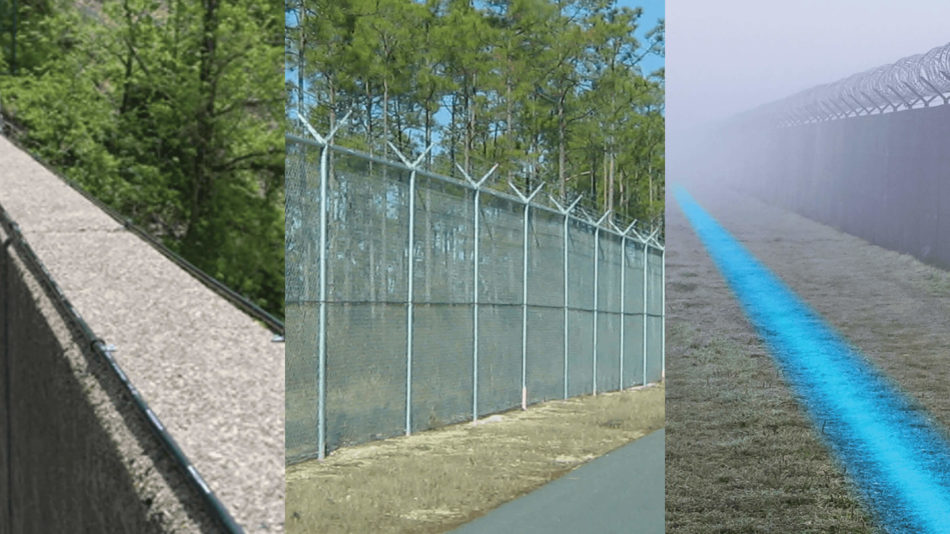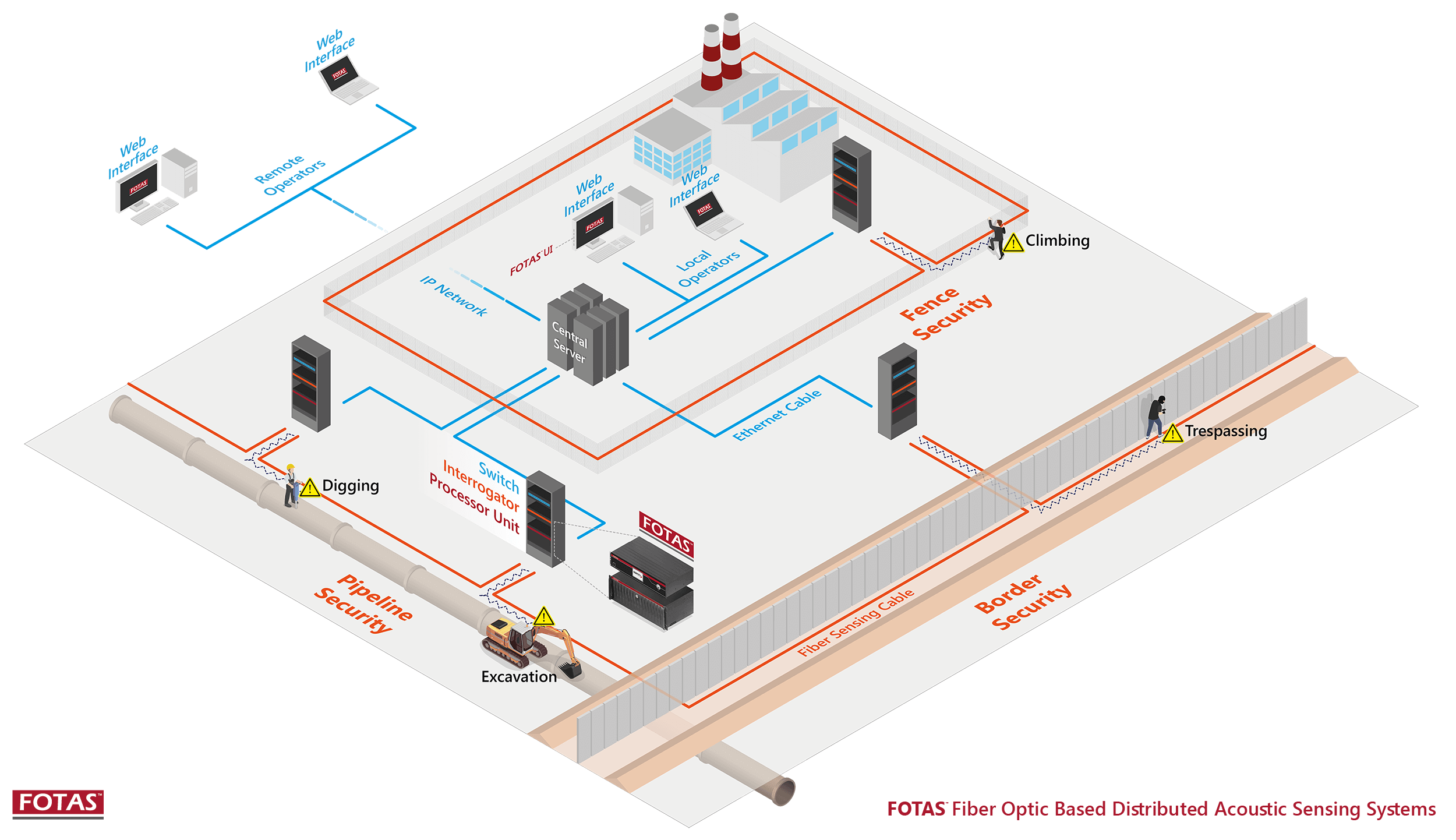Why Fiber Optic Safety And Security Solutions Are the Future of Security
The change to fiber optic security systems marks a substantial improvement in the world of defense, driven by their exceptional information transmission capacities and strength to outside interferences. As the landscape of safety and security progresses alongside arising modern technologies such as AI and IoT, the capacity for fiber optics to improve and redefine safety infrastructures becomes increasingly apparent.
Advantages of Fiber Optic Solutions
Among the main advantages of fiber optic systems is their superior data transfer capacity, which facilitates the transmission of large quantities of data over lengthy distances without significant loss. This particular is specifically valuable for safety and security applications that require the constant monitoring and transfer of high-def video feeds, sensing unit data, and various other important details. Optical fiber can fit the expanding demands of modern-day safety systems, making sure that information stays intact and trustworthy.
Additionally, fiber optic cable televisions are less susceptible to electro-magnetic interference, which can be a considerable problem in settings with different electronic gadgets. This resistance enhances the honesty of the information being transmitted, therefore lessening the danger of data violations or system failures. Fiber optic systems are naturally much more safe and secure than standard copper cords, as touching into a fiber optic line without detection is exceptionally challenging.
The longevity of fiber optic cords additionally adds to their appeal. They are resistant to ecological aspects such as dampness and temperature level variations, reducing maintenance prices and raising system longevity. Generally, these benefits position fiber optic systems as a durable and reliable selection for contemporary security frameworks, guaranteeing trustworthy and secure data transmission.
Enhanced Data Transmission Speed

The capability to send large amounts of information swiftly promotes the smooth integration of high-definition video feeds and progressed analytics. Safety and security systems can now refine and evaluate details in real-time, improving response times and situational awareness. In addition, fiber optic links sustain longer transmission distances without degradation of signal quality, making them perfect for extensive protection networks.
The increased speed of fiber optic systems not only enhances the performance of protection operations however also reduces latency. This is particularly important in essential scenarios where prompt decision-making can protect against security violations or alleviate potential dangers. As organizations continue to prioritize safety and security and performance, the demand for fast and trustworthy information transmission will definitely solidify fiber optic systems as a keystone of contemporary safety and security facilities.
Resistance to Disturbance
Fiber optic safety systems regularly demonstrate outstanding resistance to electromagnetic interference, an essential benefit in environments vulnerable to electronic sound. Unlike conventional copper cords, which can be adversely impacted by magnetic fields, superhigh frequency interference, and various other forms of electrical disruption, fiber optic cords use light to transfer data. This intrinsic home have a peek at these guys makes sure that the signals remain clear and unchanged, regardless of bordering electronic task.
The usage of glass or plastic fibers in fiber optic technology develops an obstacle versus disturbance, permitting reliable data transmission even in difficult situations such as industrial centers, city locations with high digital web traffic, or places near radio towers. This characteristic considerably decreases the chance of signal deterioration or loss, making fiber optic systems especially suitable for protection applications where honesty and accuracy of information are vital.
Furthermore, this resistance to disturbance improves the general efficiency and dependability of protection systems, guaranteeing that tracking and alert systems work perfectly. In a globe where security is increasingly intimidated by sophisticated innovations, the durability of fiber optic systems stands out as a pivotal feature, strengthening their standing as an essential have a peek at this website element of modern safety facilities.
Cost-Effectiveness Gradually
Significant cost financial savings can be attained with time with the implementation of fiber optic safety systems. While the preliminary financial investment may seem greater contrasted to traditional copper-based systems, the long-lasting monetary benefits emerge through lowered operational and maintenance prices (fiber security). Fiber optic wires are naturally much more long lasting and less susceptible to environmental factors, which converts to lower replacement and repair expenditures over their life-span
In addition, fiber optic systems require less power to run, which further decreases energy expenses. Improved information transmission capabilities allow for less repeaters and amplifiers, reducing tools investment and enhancing installation procedures. The scalability of these systems also contributes to cost-effectiveness, as companies can increase their protection facilities without incurring considerable additional expenses.
An additional variable to think about is the boosted efficiency in tracking and action capacities that fiber optics provide. Improved real-time data transmission can cause quicker incident action times, possibly mitigating losses and obligations related to protection violations. In amount, the long-lasting advantages of fiber optic safety systems not only validate the preliminary expense however also place them as a financially prudent option for companies seeking durable protection options.

Future Technologies in Security
Progressing technologies are set to reinvent security systems, incorporating expert system (AI) and machine understanding to boost danger discovery and reaction abilities. These technologies will official source allow safety and security systems to analyze vast amounts of information in real-time, identifying patterns and anomalies that indicate potential dangers. This aggressive approach will enable quicker decision-making and much more effective incident actions.
Additionally, the incorporation of the Web of Points (IoT) is leading the way for interconnected safety tools, supplying extensive security and monitoring. Smart sensors can relay information about environmental changes, while automated informs can alert security workers quickly of suspicious tasks.
Moreover, the development of biometric modern technologies will further bolster security devices. Face recognition, finger print scanning, and retina recognition are coming to be much more sophisticated, supplying layers of authentication that are hard to bypass.
Final Thought
In final thought, fiber optic security systems represent a considerable development in protection innovation, using unequaled data transmission rate, resistance to electro-magnetic interference, and long-term cost-effectiveness. As the need for sophisticated safety remedies remains to expand, the integration of fiber optics with emerging innovations such as AI, IoT, and biometrics will certainly further enhance protection facilities (fiber security). The mix of these advancements will certainly make sure an extra safe and receptive atmosphere, solidifying fiber optics as a foundation of future safety systems